
In polymer chemistry and materials science, resin is a solid or highly viscous substance of plant or synthetic origin that is typically convertible into polymers. Resins are usually mixtures of organic compounds. This article focuses on naturally occurring resins.

A booby is a seabird in the genus Sula, part of the family Sulidae. Boobies are closely related to the gannets (Morus), which were formerly included in Sula.

Styrax is a genus of about 130 species of large shrubs or small trees in the family Styracaceae, mostly native to warm temperate to tropical regions of the Northern Hemisphere, with the majority in eastern and southeastern Asia, but also crossing the equator in South America. The resin obtained from the tree is called benzoin or storax.

Benzoin or benjamin is a balsamic resin obtained from the bark of several species of trees in the genus Styrax. It is used in perfumes and some kinds of incense and as a flavoring and medicine. It is distinct from the chemical compound benzoin, which is ultimately derived chemically from benzoin resin; the resin, however, does not contain this compound.

The Styracaceae are a small family of flowering plants in the order Ericales, containing 12 genera and about 160 species of trees and shrubs. The family occurs in warm temperate and subtropical regions of the Northern Hemisphere.

Storax, often commercially sold as styrax, is a natural resin isolated from the wounded bark of Liquidambar orientalis Mill. and Liquidambar styraciflua L. (Hamamelidaceae). It is distinct from benzoin, a similar resin obtained from the Styracaceae plant family.
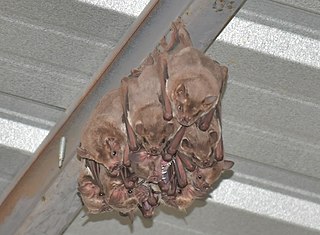
The fraternal fruit-eating bat is a species of bat in the family Phyllostomidae that is found in drier habitats in Ecuador and Peru. It was formerly considered to be a subspecies of the Jamaican fruit bat, but was raised to species level in 1978. The smallest species in the group of large Artibeus, it has a forearm length of 52–59 mm (2.0–2.3 in), a total length of 64–76 mm (2.5–3.0 in), and a weight of 30–55 g (1.1–1.9 oz).
Styrax vilcabambae is a species of flowering plant in the genus Styrax and the family Styracaceae. It is endemic to Peru.
Styrax foveolaria is a species of tree in the family Styracaceae. It is native to Peru and Ecuador. It has been classified by the IUCN as a vulnerable species.
Styrax fraserensis is a species of flowering plant in the genus Styrax and family Styracaceae. It is a tree endemic to Peninsular Malaysia. It is threatened by habitat loss.
Styrax litseoides is a species of flowering plant in the genus Styrax and family Styracaceae. It is endemic to Vietnam.
Styrax peruvianus is a species of tree in the family Styracaceae. It is found from Costa Rica south to Peru. It has been classified by the IUCN as a vulnerable species.

Styrax portoricensis, locally known as palo de jazmin, is a species of flowering plant in the family Styracaceae. It is endemic to Puerto Rico. It is one of the rarest endemic trees of Puerto Rico and is known to occur only in the northeastern Luquillo Mountains and the north-central Cayey Mountains.
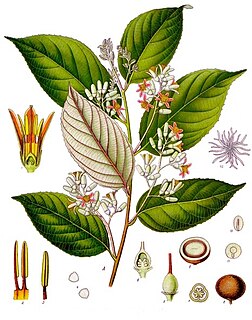
Styrax benzoin is a species of tree native to Sumatra in Indonesia. Common names for the tree include gum benjamin tree, loban (in Arabic), kemenyan (in Indonesia and Malaysia), onycha, and Sumatra benzoin tree.
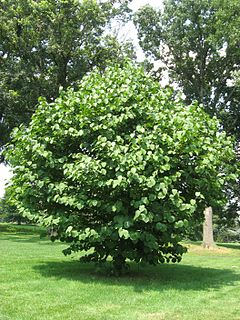
Styrax obassia is a species of flowering plant in the family Styracaceae. It is native to Hokkaido Island in Japan, and to China.
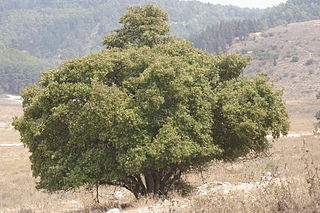
Styrax officinalis is a species of shrub in the family Styracaceae.
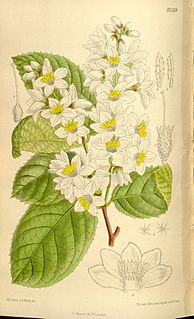
Styrax hemsleyanus (老鸹铃), the Hemsley snowball, is a species of flowering plant in the family Styracaceae, native to central China. Growing to 12 m (39 ft) tall by 5 m (16 ft) broad, it is a conical deciduous tree with large rounded leaves, 12 cm (5 in) long, and clusters of cup-shaped flowers in early summer.

Styrax americanus, the American snowbell or mock-orange, is a plant species native to the southeastern United States and the Ohio Valley. It has been reported from Texas and Florida to Virginia and Missouri. It generally grows in swamps and on floodplains and in other wet locations.

Styrax grandifolius, the bigleaf snowbell or bigleaf storax, is a plant species native to the southeastern United States, ranging from Virginia south to Florida and west to Texas and Missouri. The plant grows as a deciduous shrub or tree up to 6 metres (20 ft) high, and is most commonly found in upland forests of the southeast's piedmont. As the specific epithet suggests, the species has larger leaves than sympatric Styracaceae, with alternate, obovate leaves up to 14 cm long and 10 cm wide that are densely pubescent underneath. Flowers are borne during early summer in racemes containing up to 20 flowers.
Inga striata is a perennial tree species and is a member of the family Fabaceae. This species occurs in countries like Bolivia, Brazil, Colombia, Ecuador, Guyana, Peru, Suriname and the territory of French Guiana.














